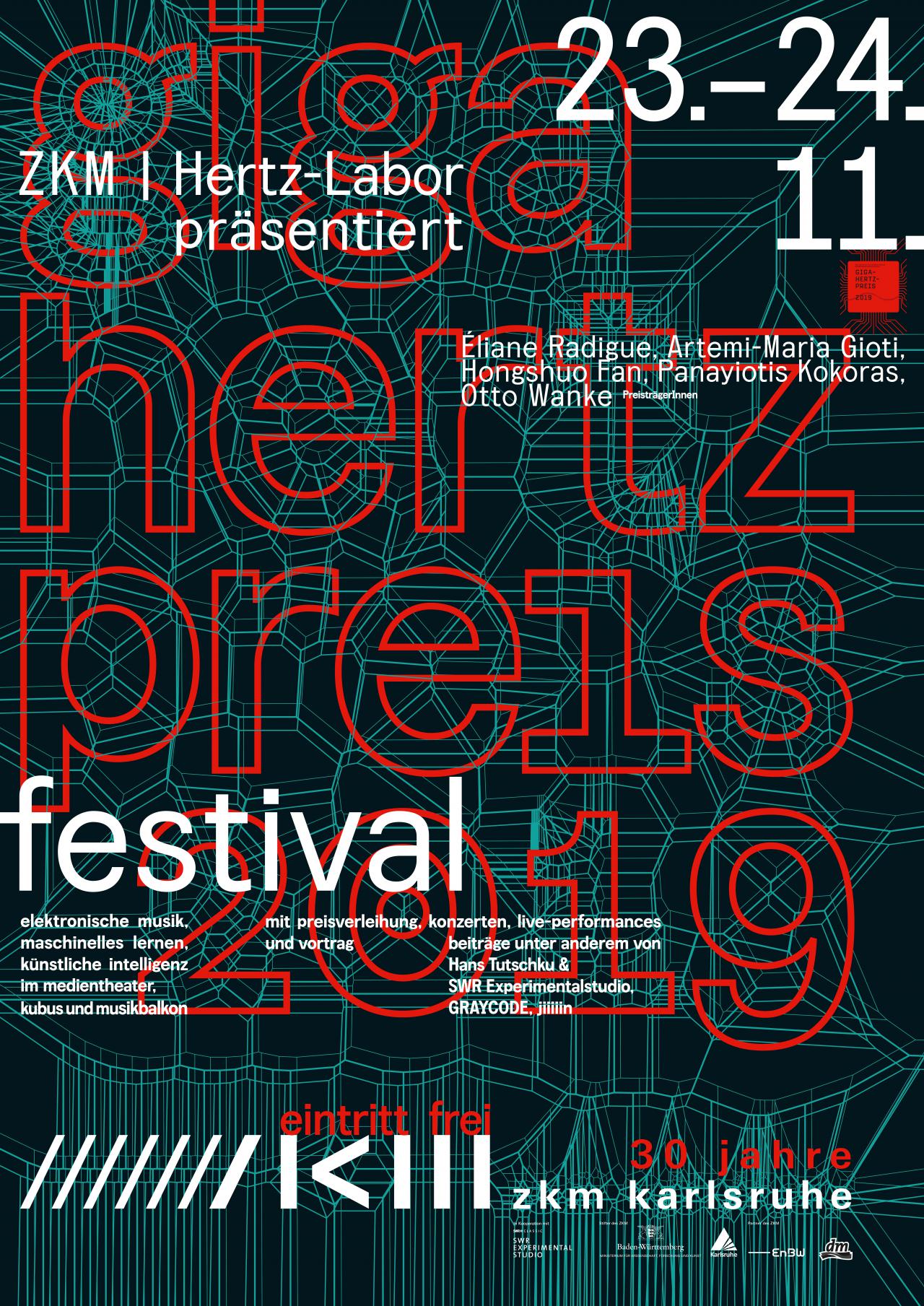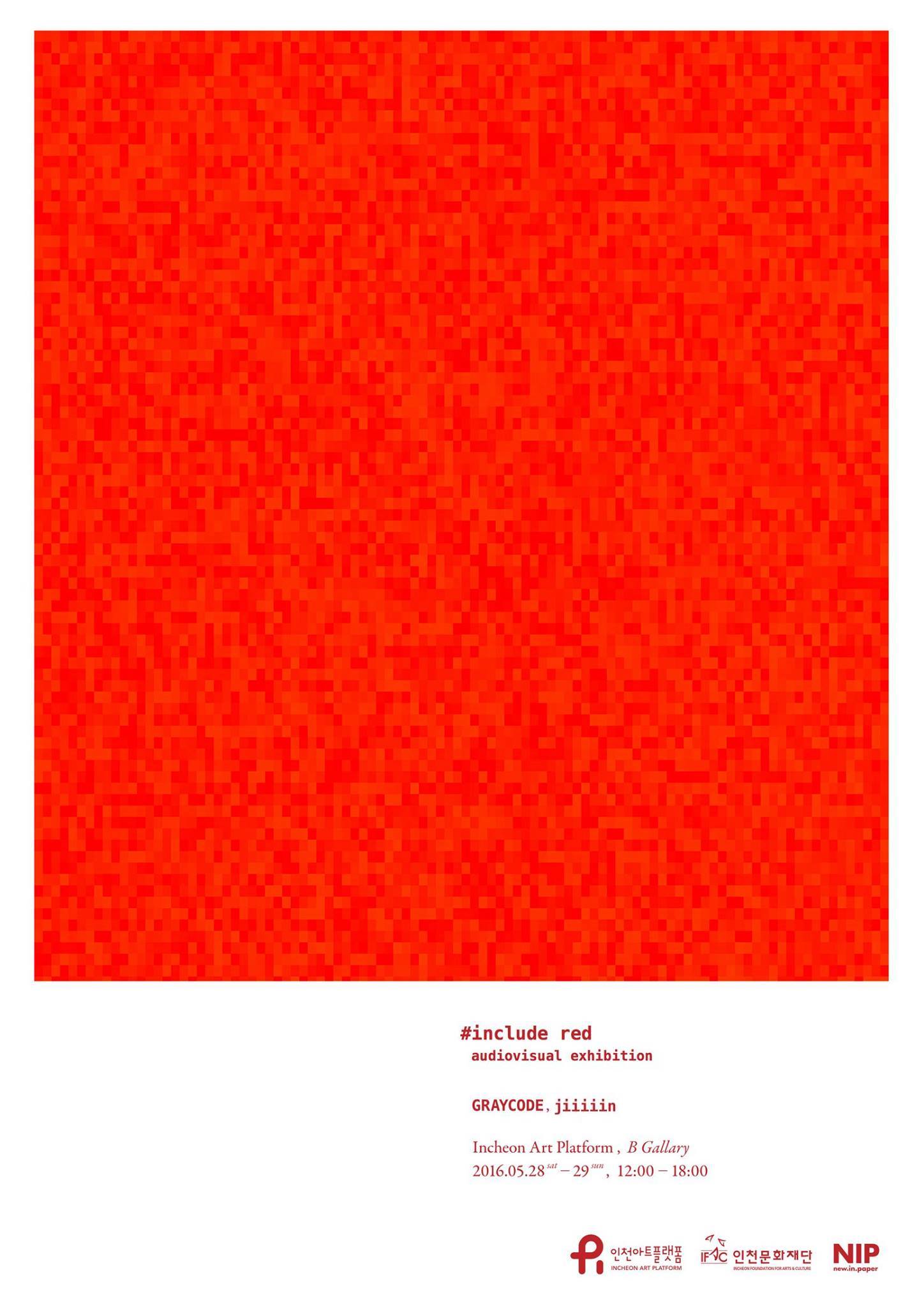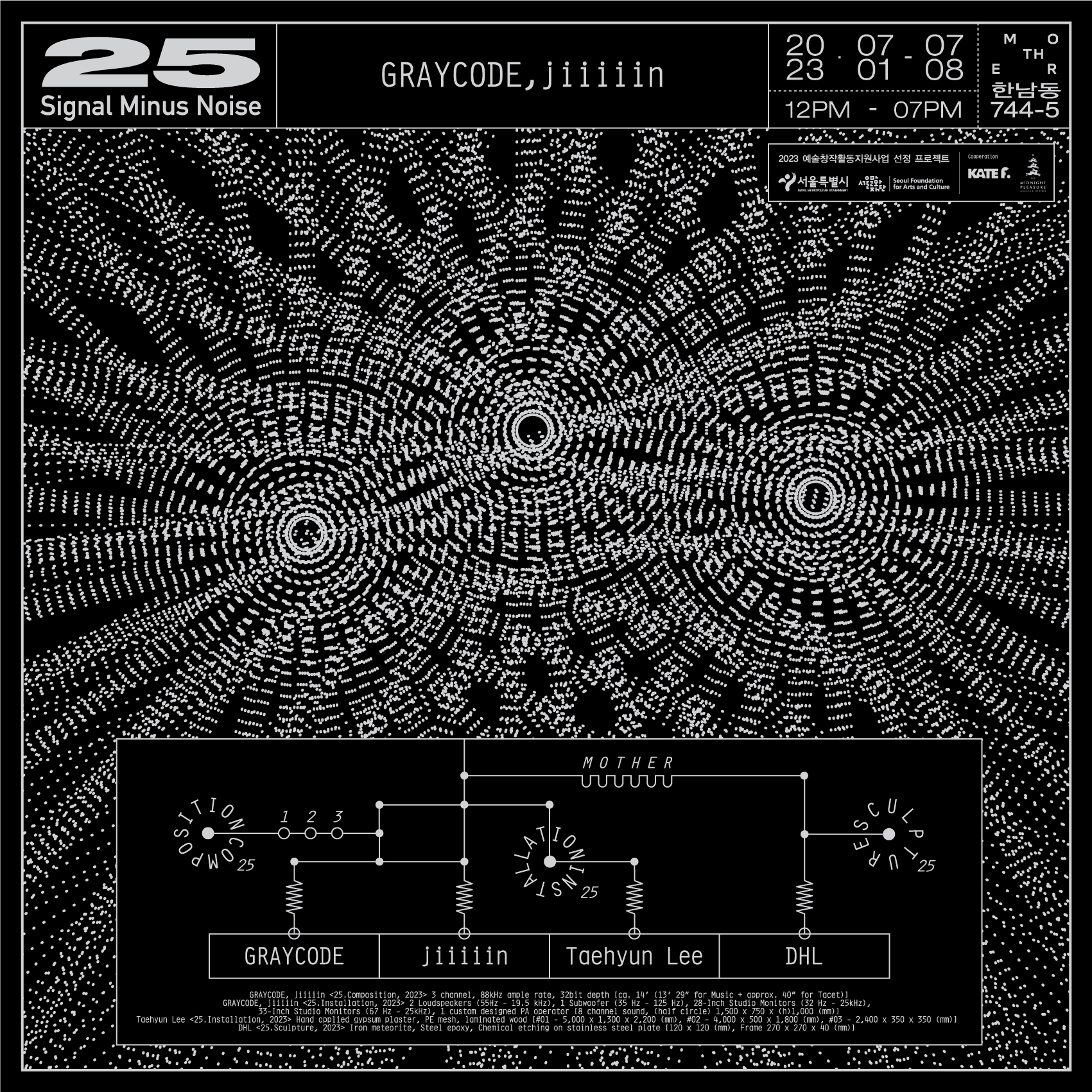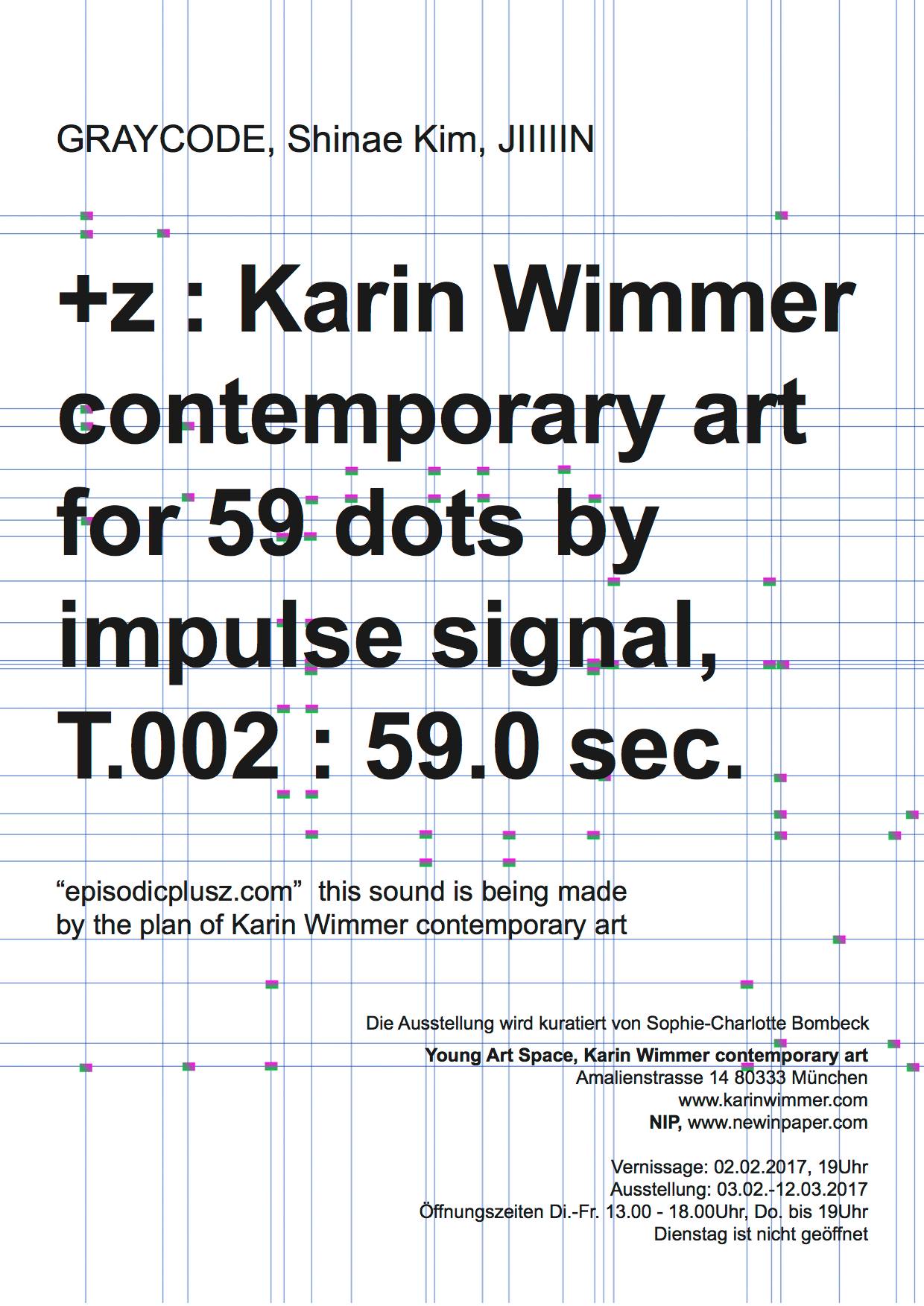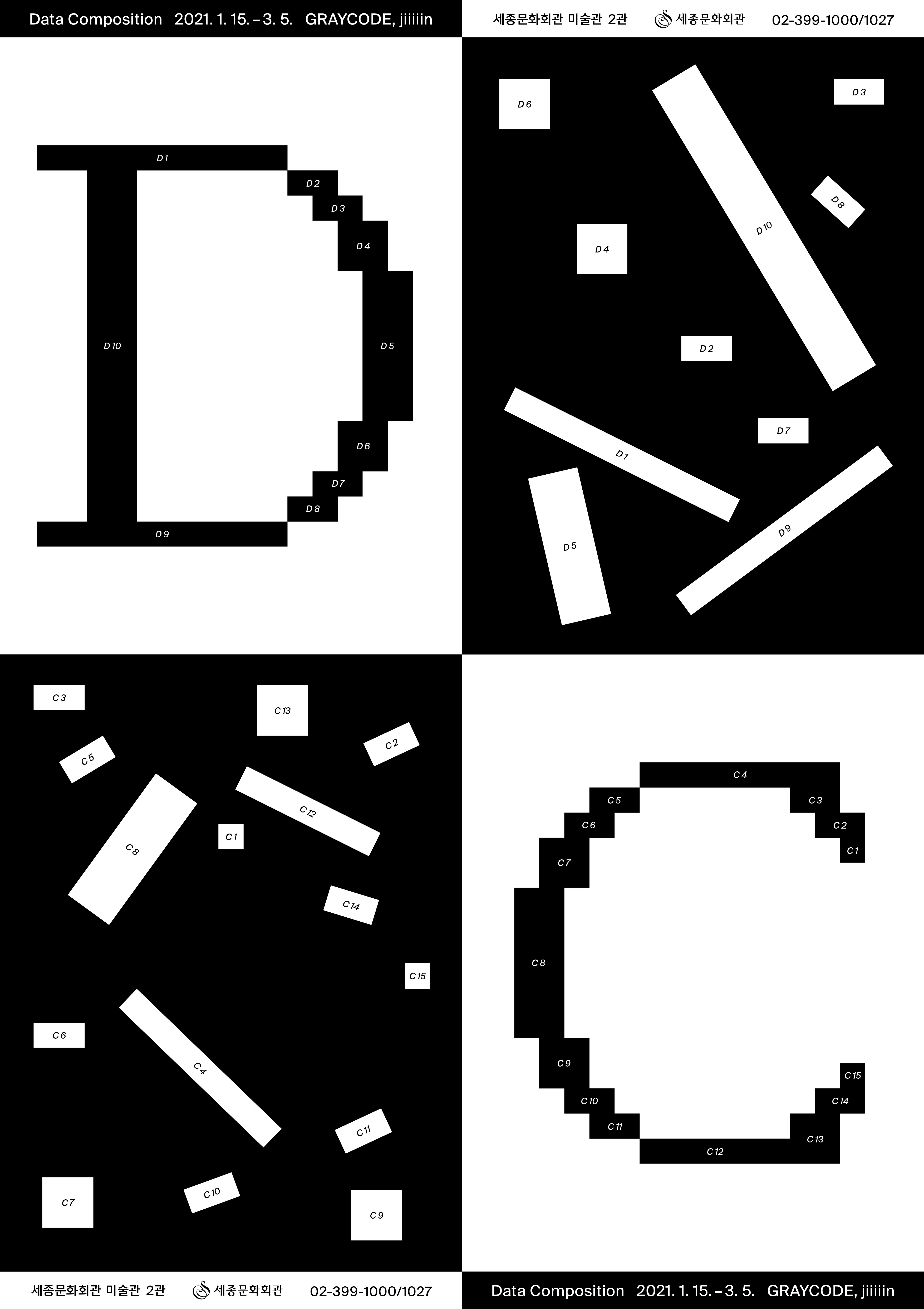Data Composition
김윤철
아직도 그리고 여전히 사운드와 그 개념, 그리고 청각적 경험이 작품의 중심이 되는 전시 형태는 흔하지 않다. ‘복합(multi-)’과 ‘혼종(hybrid-)’을 접두사로 삼는 새로운 장르와 매체들이 범람하고 있지만 대부분 시각적 결과물로 귀결되고 있고, 실제로 전시 기반의 작품에서 사운드는 시각적 경험을 보조하는 하나의 효과 혹은 전시 공간을 울리는 의미 없는 배경으로 밀려나기 일쑤이다. 우리는 예술 안에서 마저도 음악과 미술이라는 거대한 고원이 솟아나며 생성된 두 영역 사이의 깊은 협곡과 그 깊이를 의식하지 않기 때문이다.
이것은 초창기의 사진이 미술의 언어로 읽혀지며 행해졌던 오독과 크게 다르지 않은데, 사운드 아트는 또 다른 영역에서의 오독이 가능하다. 그것은 음악 그리고 공연예술이다. 1958년 브뤼셀 엑스포 58에서 건축가 르 코르뷔지에(Le Corbusier)와 작곡가 이안니스 크세나키스(Iannis Xenakis), 그리고 에드가르 바레즈(Edgar Varèse)에 의해 지어진 필립스 파빌리온에서는 음향 공간으로서의 사운드 공간화(spatialization)라는 시도가 있었고, 데이비드 튜더(David Tudor)는 레인포레스트(rainforest)를 통해 전시 공간을 하나의 공간으로 변모시키는 시도를 했다. 이러한 시도들은 이미 반세기를 훌쩍 넘었지만, 우리는 여전히 이러한 예술의 형태에 낯설어 한다.
또한, 몰입된 환경을 기반으로 하는 예술(Immersive art)은 최근 디스플레이와 그래픽 기술의 발달과 대중화로 인해 더욱 극대화되었고, 강한 시청각적 체험을 제공하는 작품들은 실제와 가상, 관람자의 몸과 감각을 하나의 과잉으로 만들고 있다. 그러나 이러한 스펙터클의 과잉은 여기, 지금(hic et nunc) 다시 말해, 시간과 공간에 현존하는 개별자로서의 자신을 잊게 하는 원근법적 구도의 소실점을 향해 우리를 미끄러지게 한다. 이러한 사운드 아트의 장르적 위상과 오늘날 거대한 스펙터클의 과다하게 노출되어 번아웃(burn out)된 우리에게 몸, 그리고 물리적으로 반응하는 음향이 출렁이는 GRAYCODE와 jiiiiin의 전시 <데이터 컴포지션(Data Composition)>의 공간은 가히 낯설지 않을 수 없다. 그러나 이러한 낯설음은 단지 위에 서술한 이유와는 별개로 그들이 추구하는 예술적 실천의 핵심에서 유발된 것일 수 있다. 나는 이 핵심을 크게 추상성(abstractness), 비대상성(non-objectivity)그리고 정동성(affectiveness)이라는 세 가지를 통해 이야기하고자 한다.
우리가 모노크롬 회화에서 순수한 색, 즉 형태와 형식으로부터 자유로운 색의 경험을 통해 아무것도 담겨지지 않는 것처럼 보이는 화폭의 평면 위에서 깊이를 경험하듯이, 추상성이란 그들의 작업에서의 사운드, 다시 말해 배음이 없는 낮은 정현파(sine wave)의 발진이 우리에게 ‘순수한 음향을 통해 음향을 듣는다’라는 메타적 듣기를 가능하게 한다. 그럼으로써 듣기란 어떠한 서사와 음악적 형식을 보조하는 소리들의 경과가 아닌 순수한 시간과 공간을 경험하는 것이며, 그것을 통해 여기와 지금(hic et nunc)을 환기시키는 듣는 몸의 사건이 발현하는 장소 안으로 감상자를 위치시킨다. 이러한 듣기는 추상적이고 기하학적인 파형 y=sin(x)가 발진(oscillation)을 통해 시공간에서 공기의 울림으로 드러나는 것으로, 물리적 세계로 변환되는 디지털의 추상적인 정보가 아날로그의 물리적 진동 그리고 주어진 것들(datum[1])로부터 하나의 사실(factum)로 현현하는 세계이다. 이러한 세계는 정보라는 비물질이 물리적 신호로 전송되는 것이기에 소음과 엔트로피를 피할 수 없는 복잡한 얽힘의 장소이다. 그것은 선형과 비선형 그리고 내부와 외부의 것들로 무수히 중첩되는데 내부로는 발진자(oscillator)의 회로 안에서, 외부로는 관객의 고막의 울림 위에서, 그리고 전송 중인 공간의 공기와 습도, 온도 그리고 벽의 물성 등을 통해 다시는 반복할 수 없는 시간의 환영(illusion of time)으로서의 사건을 만든다. GRAYCODE와 jiiiiin은 이러한 급진적인 방식을 통해 전시 공간과 중첩되는 듣기라는 사건의 장소를 몸 안으로 그리고 공간으로 소리를 통해 건축하는 것이다. 그렇기에 그들이 기획하는 공간은 역설적으로 비워져 있다.
[1] 데이터(data)의 복수
이것은 초창기의 사진이 미술의 언어로 읽혀지며 행해졌던 오독과 크게 다르지 않은데, 사운드 아트는 또 다른 영역에서의 오독이 가능하다. 그것은 음악 그리고 공연예술이다. 1958년 브뤼셀 엑스포 58에서 건축가 르 코르뷔지에(Le Corbusier)와 작곡가 이안니스 크세나키스(Iannis Xenakis), 그리고 에드가르 바레즈(Edgar Varèse)에 의해 지어진 필립스 파빌리온에서는 음향 공간으로서의 사운드 공간화(spatialization)라는 시도가 있었고, 데이비드 튜더(David Tudor)는 레인포레스트(rainforest)를 통해 전시 공간을 하나의 공간으로 변모시키는 시도를 했다. 이러한 시도들은 이미 반세기를 훌쩍 넘었지만, 우리는 여전히 이러한 예술의 형태에 낯설어 한다.
또한, 몰입된 환경을 기반으로 하는 예술(Immersive art)은 최근 디스플레이와 그래픽 기술의 발달과 대중화로 인해 더욱 극대화되었고, 강한 시청각적 체험을 제공하는 작품들은 실제와 가상, 관람자의 몸과 감각을 하나의 과잉으로 만들고 있다. 그러나 이러한 스펙터클의 과잉은 여기, 지금(hic et nunc) 다시 말해, 시간과 공간에 현존하는 개별자로서의 자신을 잊게 하는 원근법적 구도의 소실점을 향해 우리를 미끄러지게 한다. 이러한 사운드 아트의 장르적 위상과 오늘날 거대한 스펙터클의 과다하게 노출되어 번아웃(burn out)된 우리에게 몸, 그리고 물리적으로 반응하는 음향이 출렁이는 GRAYCODE와 jiiiiin의 전시 <데이터 컴포지션(Data Composition)>의 공간은 가히 낯설지 않을 수 없다. 그러나 이러한 낯설음은 단지 위에 서술한 이유와는 별개로 그들이 추구하는 예술적 실천의 핵심에서 유발된 것일 수 있다. 나는 이 핵심을 크게 추상성(abstractness), 비대상성(non-objectivity)그리고 정동성(affectiveness)이라는 세 가지를 통해 이야기하고자 한다.
우리가 모노크롬 회화에서 순수한 색, 즉 형태와 형식으로부터 자유로운 색의 경험을 통해 아무것도 담겨지지 않는 것처럼 보이는 화폭의 평면 위에서 깊이를 경험하듯이, 추상성이란 그들의 작업에서의 사운드, 다시 말해 배음이 없는 낮은 정현파(sine wave)의 발진이 우리에게 ‘순수한 음향을 통해 음향을 듣는다’라는 메타적 듣기를 가능하게 한다. 그럼으로써 듣기란 어떠한 서사와 음악적 형식을 보조하는 소리들의 경과가 아닌 순수한 시간과 공간을 경험하는 것이며, 그것을 통해 여기와 지금(hic et nunc)을 환기시키는 듣는 몸의 사건이 발현하는 장소 안으로 감상자를 위치시킨다. 이러한 듣기는 추상적이고 기하학적인 파형 y=sin(x)가 발진(oscillation)을 통해 시공간에서 공기의 울림으로 드러나는 것으로, 물리적 세계로 변환되는 디지털의 추상적인 정보가 아날로그의 물리적 진동 그리고 주어진 것들(datum[1])로부터 하나의 사실(factum)로 현현하는 세계이다. 이러한 세계는 정보라는 비물질이 물리적 신호로 전송되는 것이기에 소음과 엔트로피를 피할 수 없는 복잡한 얽힘의 장소이다. 그것은 선형과 비선형 그리고 내부와 외부의 것들로 무수히 중첩되는데 내부로는 발진자(oscillator)의 회로 안에서, 외부로는 관객의 고막의 울림 위에서, 그리고 전송 중인 공간의 공기와 습도, 온도 그리고 벽의 물성 등을 통해 다시는 반복할 수 없는 시간의 환영(illusion of time)으로서의 사건을 만든다. GRAYCODE와 jiiiiin은 이러한 급진적인 방식을 통해 전시 공간과 중첩되는 듣기라는 사건의 장소를 몸 안으로 그리고 공간으로 소리를 통해 건축하는 것이다. 그렇기에 그들이 기획하는 공간은 역설적으로 비워져 있다.
[1] 데이터(data)의 복수
마치 관객들이 보는 빛(seeing light)을 통해 제임스 터렐(James Turrell)의 작품을 빛으로 충만한 텅 빈 공간으로 응시하는 것처럼, 그들의 전시장은 보이지 않는 파형으로 가득하다. 이것이 바로 그들 작업에 있어서 중요한 요소 중 하나인 비대상성(non-objectivity)이다. 나는 그것을 작품의 비물질적 속성이라는 개념을 말하는 것이 아니라 관객과 분리된 외부로의 대상성으로써 존재하는 것, 그리고 언제나 거기에 있으리라는 가정 안에서의 일반적인 물리적 대상으로서의 예술 작품이 아니라 마치 휘발하는 시간으로써 어떤 영속을 역설하는 비대상성을 말하는 것이다. 그렇기에 우리의 시선은 전시 공간 안에서 오히려 멈춰져 있지만, 우리의 심상에는 수많은 이미지와 내적 소리들로 가득하다.
이러한 비대상성(non-objectivity)이 역설하는 영속과 찰나로 휘발하는 시간은 바로 우리의 몸과 관계하는 작품의 정동성(affectiveness)과도 얽혀있다. 정동이란 새로운 기분의 전환을 강조하는 감정(emotion)이 아니라 몸의 질적인 변화를 일으키는 것(affection)이다. 이런 의미로 데이터 컴포지션(Data Composition)의 사운드는 우리에게 작품과의 비접촉을 통한 직접적이고 물리적이며 촉각적인 사운드와의 몸적 경험을 가능하게 한다. 이것은 소리가 가지고 있는 당연한 음향적인 속성을 말하는 것이 아니라 소닉 행위소(sonic actant)로, 소리가 하나의 행위자이자 우리와 관계하는 것이기도 하다. 이 지점이 그들이 공연이 아닌 전시라는 예술의 방식을 추구하는 이유이기도 하다. 보이지 않지만 30Hz와 40Hz의 진동이 만나며 이루어지는 음의 소멸간섭과 보정간섭에 의해 생기는 파형의 증폭과 감쇄의 맥놀이(beat)이의 파장은 공간의 온도와 습도 등의 조건에 따라 대략 34미터나 된다. 그것은 두개의 정현파로 구성(composition)된 아주 단순한 두 개의 발진이 선형과 지수적인 주파수의 변화를 통해 상상하지 못할 정도의 복잡한 소리의 사건을 만들기 때문이다. 거기에 더해져 관람자의 감상 위치와 공간을 기획하며 구성한 전시장 벽들의 반향에 따라 관람자는 긴 파형의 어딘가를 거닐거나 멈추어 서서 마치 방사되는 열을 느끼듯이 소리를 몸으로 느끼고 있는 것이다. 그것은 단지 귀로 듣는 소리가 아닌 몸으로, 내부의 장기로, 그리고 피부로 듣는 것이기 때문이다. 그로 인해 그들은 거대한 스펙터클의 이미지의 환영 없이도 시간과 공간의 환영을 인식하게 하며 우리가 헤드폰이나 일상의 스피커로 들을 수 없는 특별한 소리의 풍경으로의 추상적인 소닉 스케이프를 통해 마치 우리가 어느 깊은 물 속이거나 아니면 무중력의 공간에 놓여져 있는 듯한 몸의 변화를 모색하는 것이다. 이러한 낯선 그래서 때로는 불쾌하기까지한 사운드 스케이프에 놓여지는 경험은 어쩌면 음악도 그리고 미술도 아닌 협곡의 깊이에서 출발하는 새로운 젊은 작가들의 미학적인 실천이기에 더욱 우리는 주의 깊게 그들이 초대하는 지형 속으로 들어가야 한다고 생각한다.
스피커 시스템을 전면으로 설치한 사운드로 가득한 긴 복도와 같은 공간의 작품 <sound for on illusion of time>과 8개의 프로젝션이 실시간으로 사운드와 동기화되며 소리의 맥놀이처럼 흑백의 수많은 선들의 모아레(moire)로 이루어지는 마치 가상의 데이터 호라이즌이 펼쳐지는 작품 <on illusion of time>은 이번 전시 Data Composition 전시의 주요 작품이다. 이 외에도 드로잉과 존 케이지의 <fontana mix>를 연상하게 하는 투명한 아크릴의 여러 겹들로 이루어진 이미지들을 통해 그들의 추상적인 사운드 아트로의 예술적인 시도들을 엿 볼 수가 있다. 무엇보다도 이번 전시는 온라인과 오프라인의 관객의 입장에 따라 저장되어지는 타임스탬프의 시간 데이터를 모아 전시 후 새로운 음악 작업(data composition)을 준비 하고 있다. Data composition은 열려 있는 여러 차원의 데이터를 센싱하고 저장하는 하나의 액티브한, 감지하는 공간이기도 한 것이다.
이러한 비대상성(non-objectivity)이 역설하는 영속과 찰나로 휘발하는 시간은 바로 우리의 몸과 관계하는 작품의 정동성(affectiveness)과도 얽혀있다. 정동이란 새로운 기분의 전환을 강조하는 감정(emotion)이 아니라 몸의 질적인 변화를 일으키는 것(affection)이다. 이런 의미로 데이터 컴포지션(Data Composition)의 사운드는 우리에게 작품과의 비접촉을 통한 직접적이고 물리적이며 촉각적인 사운드와의 몸적 경험을 가능하게 한다. 이것은 소리가 가지고 있는 당연한 음향적인 속성을 말하는 것이 아니라 소닉 행위소(sonic actant)로, 소리가 하나의 행위자이자 우리와 관계하는 것이기도 하다. 이 지점이 그들이 공연이 아닌 전시라는 예술의 방식을 추구하는 이유이기도 하다. 보이지 않지만 30Hz와 40Hz의 진동이 만나며 이루어지는 음의 소멸간섭과 보정간섭에 의해 생기는 파형의 증폭과 감쇄의 맥놀이(beat)이의 파장은 공간의 온도와 습도 등의 조건에 따라 대략 34미터나 된다. 그것은 두개의 정현파로 구성(composition)된 아주 단순한 두 개의 발진이 선형과 지수적인 주파수의 변화를 통해 상상하지 못할 정도의 복잡한 소리의 사건을 만들기 때문이다. 거기에 더해져 관람자의 감상 위치와 공간을 기획하며 구성한 전시장 벽들의 반향에 따라 관람자는 긴 파형의 어딘가를 거닐거나 멈추어 서서 마치 방사되는 열을 느끼듯이 소리를 몸으로 느끼고 있는 것이다. 그것은 단지 귀로 듣는 소리가 아닌 몸으로, 내부의 장기로, 그리고 피부로 듣는 것이기 때문이다. 그로 인해 그들은 거대한 스펙터클의 이미지의 환영 없이도 시간과 공간의 환영을 인식하게 하며 우리가 헤드폰이나 일상의 스피커로 들을 수 없는 특별한 소리의 풍경으로의 추상적인 소닉 스케이프를 통해 마치 우리가 어느 깊은 물 속이거나 아니면 무중력의 공간에 놓여져 있는 듯한 몸의 변화를 모색하는 것이다. 이러한 낯선 그래서 때로는 불쾌하기까지한 사운드 스케이프에 놓여지는 경험은 어쩌면 음악도 그리고 미술도 아닌 협곡의 깊이에서 출발하는 새로운 젊은 작가들의 미학적인 실천이기에 더욱 우리는 주의 깊게 그들이 초대하는 지형 속으로 들어가야 한다고 생각한다.
스피커 시스템을 전면으로 설치한 사운드로 가득한 긴 복도와 같은 공간의 작품 <sound for on illusion of time>과 8개의 프로젝션이 실시간으로 사운드와 동기화되며 소리의 맥놀이처럼 흑백의 수많은 선들의 모아레(moire)로 이루어지는 마치 가상의 데이터 호라이즌이 펼쳐지는 작품 <on illusion of time>은 이번 전시 Data Composition 전시의 주요 작품이다. 이 외에도 드로잉과 존 케이지의 <fontana mix>를 연상하게 하는 투명한 아크릴의 여러 겹들로 이루어진 이미지들을 통해 그들의 추상적인 사운드 아트로의 예술적인 시도들을 엿 볼 수가 있다. 무엇보다도 이번 전시는 온라인과 오프라인의 관객의 입장에 따라 저장되어지는 타임스탬프의 시간 데이터를 모아 전시 후 새로운 음악 작업(data composition)을 준비 하고 있다. Data composition은 열려 있는 여러 차원의 데이터를 센싱하고 저장하는 하나의 액티브한, 감지하는 공간이기도 한 것이다.
Data Composition
Yunchul Kim
This is reminiscent of the early history of photography, when it was often misinterpreted through the language of visual art; in the same vein, sound art can be misinterpreted additionally through the lens of other genres of art, especially music and performing arts. The spatialization of sound into an audio space was attempted by architect Le Corbusier and composers Iannis Xenakis and Edgard Varèse at the Philips Pavilion at Expo 58, held in Brussels in 1958, while David Tudor sought to transform the exhibition space into a completely new concept of space through music in his Rainforestseries. Although these attempts date back to more than half a century ago, we are still unfamiliar with such form of art.
Meanwhile, immersive art, which is based on creating an immersive environment, is rising towards its zenith due to the recent development and popularization of display and graphics technology, staging works that present intense audiovisual experiences to generate the excess of reality, virtual reality, and the body and senses of visitors. This excess of spectacle, however, presents a slippery descent towards the vanishing point in one-point perspective that makes us forget the sense of ourselves as individuals placed in hic et nunc (the here and now), or in other words, existence in time and space. This unstable status of sound art as a genre and the burnout caused by overexposure to extravagant spectacles unsurprisingly contribute to our unfamiliarity with the space created by GRAYCODE and jiiiiin in Data Composition, which is filled with sounds that physically react to each other and invite us to sense such sounds with our own body. Aside from such obstacles, however, this unfamiliarity may also be rooted in the essence of the creative practice undertaken by the artists. It is at this point that I would like to describe the said essence using three major concepts: abstractness, non-objectivity, and affect.
In monochrome paintings, we perceive depth through the plane of the canvas, which seems as if nothing is expressed inside it, by experiencing pure colors—colors freed from form and style. In the same way, the sound in GRAYCODE and jiiiiin’s works—the oscillation of low sine waves without overtones—allows us to engage in the act of listening in the meta sense, thereby “listening to the sound by sensing the pure sonic,” which represents the abstractness of their art. Here, listening is not simply the perception of the mere process of sounds assisting a certain narrative or musical form, but rather the experience of pure time and space that locate the audience at the venue of the manifestation of the event of listening with the body, which evokes the sense of hic et nunc. Such place is revealed by the abstract and geometrical waves in the graph of y=sin(x) that results in the reverberation of the air within the time and space, and corresponds to a world where abstract digital information is converted into physical matter and manifests itself as analogue physical vibrations, where what is given (datum) becomes a piece of fact (factum). This world includes complex entanglements involving noise and entropy, as the immaterial is converted and transmitted as a physical sign. It is laminated with things from the linear and the non-linear, and the outside and the inside, causing the irreproducible illusion of time internally through the circuits of an oscillator, externally through the vibrations of the visitor’s eardrums, and the air, humidity, temperature, and properties of the walls at the place where the transmission is taking place. Through this radical method, GRAYCODE and jiiiiin build the space of listening in an overlap with the exhibition space within the body and the space through the utilization of sound. Ultimately, the space envisioned by the artists paradoxically appears to be empty.
Just as visitors perceive the work of James Turrell as an empty space filled with light through the act of seeing the light, the space of GRAYCODE and jiiiiin’s exhibition is filled with invisible waves. This represents non-objectivity, one of the core elements of their creative work. Here, non-objectivity indicates not the non-objective characteristic of the works, but the state of existing as objects that are separate from the visitors, and not physical objects existing under the premise that they would always remain there, but the concept of volatile time that expresses a certain sense of perpetuity. In this regard, while our gaze remains static within the exhibition place, our minds become filled with numerous images and sounds.
The paradoxically non-objective sense of perpetuity and the concept of volatile time are also linked to the affect of the works in communicating with our body. Unlike emotion, which is focused on shifting moods, affect concerns affection, the qualitative changes of our body. In this sense, the sound of Data Composition presents us with the bodily experience of direct, physical, and tactile sounds through the lack of contact with the works. This does not refer to the obvious innate properties of sound but rather a sonic actant through which the sound in the exhibition communicates with our body as the subject of an act. This point is the reason that GRAYCODE and jiiiiin pursue the method of exhibitions rather than performances. The encounter between vibrations of 30 Hz and 40 Hz results in sounds whose constructive and destructive interference among each other generates waves. The amplification and diminution of these waves, in turn, create beats whose wavelength extends over the distance of approximately 34 meters, depending on the conditions of the space such as temperature and humidity. This is because two exceedingly simple oscillations composed of two sine waves create an unfathomably complex sound event through changes in linear and exponential frequencies. In addition to this, the reverberations off the walls of the gallery, according to the artists’ plan accounting for the position of visitors and the structure of the venue, allow visitors to walk through or stand still at a certain point amidst the long waves and actually sense the sound with their body as though feeling the radiation of heat. This phenomenon does not simply involve listening to the sound through our ears, but with our entire body—through the interior organs and the skin. In this process, the artists guide us to perceive the illusion of time and space without the illusion of extravagant spectacles, striving to create a catalyst of change in our body for us to feel as if we are submerged deep underwater or in the weightlessness of space through an abstract sonic scape that exists as a landscape of sound that we cannot hear with headphones or speakers in our everyday lives. Such experience of being placed in the soundscape, which feels unfamiliar and even unpleasant at times, is perhaps the intended result of the aesthetic practice of these young emerging artists whose work originates from the deep canyon between the realms of music and art. As such, we must be especially careful while entering the terrain to which they invite us.
Two works stand out in the exhibition: sound for on illusion of time, where a speaker system is set up in a hallway-like space filled with sound, and on illusion of time, where eight projections are simultaneously displayed in sync with the aforementioned sound piece to create Moiré patterns of countless black and white lines resembling the beats of a sound and to present a virtual horizon comprised by data. Further demonstrating the artists’ attempt to create abstract sound art, the other works on display include drawings and a work consisting of images on multiple layers of transparent acrylic plates that is reminiscent of Fontana Mix by John Cage. Almost notably, the exhibition is followed by the release of a new sound piece (Data Composition) that will be created using the time data collected from the timestamps of visitors to the online and offline exhibition spaces. In this respect, Data Composition constitutes a space of active detection as well a space where data from multiple open dimensions are collected and saved.
The paradoxically non-objective sense of perpetuity and the concept of volatile time are also linked to the affect of the works in communicating with our body. Unlike emotion, which is focused on shifting moods, affect concerns affection, the qualitative changes of our body. In this sense, the sound of Data Composition presents us with the bodily experience of direct, physical, and tactile sounds through the lack of contact with the works. This does not refer to the obvious innate properties of sound but rather a sonic actant through which the sound in the exhibition communicates with our body as the subject of an act. This point is the reason that GRAYCODE and jiiiiin pursue the method of exhibitions rather than performances. The encounter between vibrations of 30 Hz and 40 Hz results in sounds whose constructive and destructive interference among each other generates waves. The amplification and diminution of these waves, in turn, create beats whose wavelength extends over the distance of approximately 34 meters, depending on the conditions of the space such as temperature and humidity. This is because two exceedingly simple oscillations composed of two sine waves create an unfathomably complex sound event through changes in linear and exponential frequencies. In addition to this, the reverberations off the walls of the gallery, according to the artists’ plan accounting for the position of visitors and the structure of the venue, allow visitors to walk through or stand still at a certain point amidst the long waves and actually sense the sound with their body as though feeling the radiation of heat. This phenomenon does not simply involve listening to the sound through our ears, but with our entire body—through the interior organs and the skin. In this process, the artists guide us to perceive the illusion of time and space without the illusion of extravagant spectacles, striving to create a catalyst of change in our body for us to feel as if we are submerged deep underwater or in the weightlessness of space through an abstract sonic scape that exists as a landscape of sound that we cannot hear with headphones or speakers in our everyday lives. Such experience of being placed in the soundscape, which feels unfamiliar and even unpleasant at times, is perhaps the intended result of the aesthetic practice of these young emerging artists whose work originates from the deep canyon between the realms of music and art. As such, we must be especially careful while entering the terrain to which they invite us.
Two works stand out in the exhibition: sound for on illusion of time, where a speaker system is set up in a hallway-like space filled with sound, and on illusion of time, where eight projections are simultaneously displayed in sync with the aforementioned sound piece to create Moiré patterns of countless black and white lines resembling the beats of a sound and to present a virtual horizon comprised by data. Further demonstrating the artists’ attempt to create abstract sound art, the other works on display include drawings and a work consisting of images on multiple layers of transparent acrylic plates that is reminiscent of Fontana Mix by John Cage. Almost notably, the exhibition is followed by the release of a new sound piece (Data Composition) that will be created using the time data collected from the timestamps of visitors to the online and offline exhibition spaces. In this respect, Data Composition constitutes a space of active detection as well a space where data from multiple open dimensions are collected and saved.
번역: 함유선




